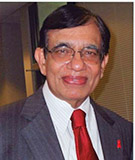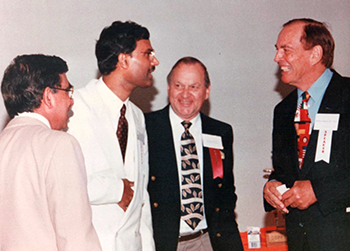
Heart Failure IV—Is it time for a Cardiac Transplant?

When all else fails and the patient has been diagnosed to have “end-stage heart failure,” we go to the ultimate treatment, “cardiac transplantation,” the real cure for this condition.
But first a story from my practice. When Jeanne Ziegler, only 56, came to see me with severe shortness of breath, she was already in end-stage heart failure. After a few admissions to the hospital ICU, it became clear that her heart would not sustain much longer. With tearful eyes she asked, “Dr. Nathan, is this it?”
“There is another option, Jeannie,” I said trying to keep her hopes alive.
“Really? You mean I have a chance?” she asked eagerly.
“Yes, we can try to get you a new heart. Tampa General has started doing the surgery.”
“What, a heart transplant!” she couldn’t believe it. “Would I be that lucky?” In fact, the idea was new even to many doctors in Hernando County at that time.
With a lot of effort, we were able to get her on the list for cardiac transplantation and on June 14, 1986, she received the matching heart of a 23-year-old, brain-dead woman. And Ziegler became the first heart transplant recipient from Hernando County. Although the journey to her new heart was not easy, Jeannie was indeed a happy woman after that. Within a few days, she started doing things which she couldn’t do before. I marveled at this spectacular life-saving new treatment that had arrived even in a remote county like ours and mentally thanked the two pioneers, Christiaan Barnard and Norman Shumway, for making this possible.

Dr. Nathan, left, with Christian Barnard at Innisbrook, 2005
There is a day in medical history that will be etched in the memory of many, when the famous cardiac surgeon Dr. Christiaan Barnard performed the first successful heart transplantation in Cape Town, South Africa. On this historic day, Dec. 3, 1967, 53-year-old Louis Washkansky received the first human-to-human heart transplant at Groote Schuur Hospital from Denise Darvall, a 25-year-old woman who was fatally injured in a car accident. The world hailed this as a giant leap for the mankind. I was watching BBC news with a few colleagues at the doctor’s lounge in Sunderland General Hospital, England, when came the breaking news, “The first successful human heart transplant was just performed ….” What an incredible moment that was!
Once the idea sank into everyone’s mind, came the real doubt, “Can the ‘heart,’ considered from time immemorial to be the seat of emotions and spirituality and always a sacred organ in the body, be simply removed from one person and put into another? Is it ethically right?” Well, human anatomy and physiology are much better understood now. The heart, although the most important organ in the body, can be exchanged for another one from a cadaveric donor just like kidney or liver. The only question was, heart being a complex organ with numerous arterial and venous connections, how feasible it would be to suture a replacement into its place. But Dr. Barnard was able to overcome all those technical challenges and social taboos, and ushered in a new era in the annals of medicine.
Never did I realize that I would meet this distinguished surgeon and shake his hands one day! And that day came sometime in early 1990 when Dr Barnard was the keynote speaker for a medical education program organized by Dr. Rao Musunuru and conducted by Bayonet Point Hospital at Innisbrook.
Evolution of Organ Transplantation
The evolution of medical therapeutics through the annals of history is interesting. In the early 19th century, we had only herbal remedies, balms and oils along with shamanic religious rituals for warding off evil spirits, to help a sick patient. Then came the liquid mixtures, followed by pills, injections and inhalers. Although there is evidence that surgery was practiced by Sushruta in India in 1000 BC, surgical practices became common only in the ’40s. Fast forward to the 21st century and the era of organ transplantation – replacing a diseased organ with a healthy new one from a willing donor – arrived in 1955 with Joseph Murray doing the first transplant, a kidney from an identical twin, at Brigham and Women’s Hospital in Boston.
The concept of organ and tissue transplant has been explored for centuries. Even in the olden days, organs were taken from cadavers and animals primarily for research purposes. Surgeons also took animal veins and arteries for practicing and perfecting their suturing and anastomosis techniques. Later, they learned more by doing animal-to-animal transplant surgery. Thereafter, came animal-to-human transplantation where animal organs like kidneys and hearts were used. However, these efforts didn’t reach fruition because of tissue incompatibility and limitations of immunosuppressant therapy.
Although the credit for the first cardiac transplant surgery goes to Barnard, it was Dr. Norman Shumway, who in 1968, performed the United States’ first successful human heart transplant, popularized the technique and made the operation a standard procedure after virtually all other surgeons had abandoned it.
To be continued …
M.P. Ravindra Nathan, M.D., is a cardiologist and Emeritus Editor of AAPI Journal. For further reading, “Second Chance - A Sister’s Act of Love” by Dr. Nathan from Outskirts Press, can be found at www.amazon.com